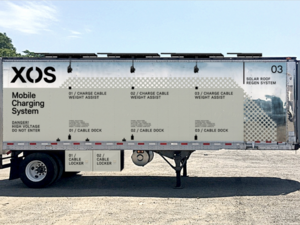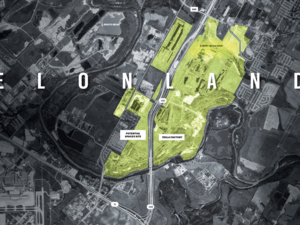
Satellite broadband companies are feeling the heat from new competition, prompting new buzz and innovation around a service most consumers never notice.
Elon Musk’s SpaceX has rushed into satellite broadband, taking direct aim at the consumer internet business currently led by the HughesNet division of EchoStar Corp. and ViaSat Inc.
Satellite internet offers customers — who are usually rural dwellers and businesses — access the internet from signals bounced off a satellite overhead rather than through a fiber optic line, coaxial cable or mobile phone network on the ground.
Satellite broadband historically has been the option of last resort due to slower speeds than terrestrial internet services, signals that can be blocked by obstructions like buildings or trees on the ground, and data latency that can make streaming glitchy due to satellites orbiting 22,000 miles away. But SpaceX's foray into satellite internet represents a high-profile bet there's still money to be made.
SpaceX has launched more than 1,700 of its Starlink broadband satellites, most of them this year, placing them into low-Earth orbits about 350 miles above the Earth. Starlink has boasted of service speeds of 100 megabits per-second or more, and those speeds have been born out by some speed tests on the ground. That speed is considered good for typical telecom or cable company broadband, but lightning-fast for residential satellite broadband.
Starlink satellites fly closer to Earth than the large, more powerful geostationary communications satellites that have been used by HughesNet and ViaSat. That closeness is expected to reduce the data latency that, for most people, helped make satellite Internet less desirable than other choices.
For as many as 15 million U.S. households, and many more around the world, there often aren't other internet options.
A limited test version of Starlink service has attracted orders from 500,000 potential customers before full rollout, according to a SpaceX filing in July to the Federal Communications Commission. It's not clear who those potential customers are, but the connection to SpaceX and Elon Musk has attracted a lot of interest to Starlink.
The Starlink service is more expensive than some HughesNet or ViaSat service plans, but its internet speeds in beta testing have been higher than what either incumbent satellite broadband company offers.
Starlink has been approved by the Federal Communications Commission to put 4,408 satellites in orbit. That has prompted a scramble among Colorado-connected companies currently providing satellite broadband service in the U.S.
Dish Network, the satellite TV sister company to EchoStar, plus ViaSat and other companies, have challenged Starlink’s satellite fleet approvals. Last month, a court declined to stop SpaceX from launching more satellites while ViaSat’s lawsuit progresses.
HughesNet, the leading U.S. satellite broadband company, currently has 1.5 million satellite internet customers, just over 1.1 million of them in the U.S. and the rest in South America.
Its satellites are maxed out on capacity now, which limits the service’s ability to increase speeds or add customers.
The company experienced a surge of customer interest and a boom in existing customers’ internet usage with the arrival of the Covid-19 pandemic, said Mark Wymer, senior vice president of HughesNet.
“We saw a mad rush as people had to work from home. From March to April, we put on a lot of subscribers,” Wymer said.
HughesNet engineers have been able to improve the capacity of the company’s existing Jupiter 1 and Jupiter 2 satellites to get between 25 megabits to 50 megabits-per-second download speeds for customers, he said.
The next satellite for EchoStar and HughesNet, a satellite known as EchoStar XXIV or Jupiter 3, will add 550 gigabits of new internet capacity in the Western Hemisphere, the company says. EchoStar values the satellite at $505.9 million, even before it’s been launched.
HughesNet says it will offer 100 megabit-per-second download speeds once the new satellite is operational and still offer service and ground antennas for cheaper than Starlink.
The added satellite capacity created by Jupiter 3 is expected to help HughesNet grow to reach 2 million subscribers, Wymer said.
Starlink’s antennas, built to find and connect with Starlink satellites continuously movingacross the sky, costs customers $500. That's several times more than a HughesNet dish that locks onto the signal of a stationary satellite, and Starlink’s $99 per month service is also far more than most HughesNet service plans.
The higher price point will be “a bit of a stretch” economically for a lot of customers, Wymer predicted. HughesNet argues its service will hold up well to Starlink’s competition as a result.
“The economics just aren’t going to not be a big advantage for them,” said Pradman Kaul, CEO and president of HughesNet, on an earnings call last fall, adding that he’s not concerned. “In fact, it's going to make our offerings much more attractive.”
Last summer, the company invested $50 million in helping bring U.K.-based OneWeb, a low-Earth orbit satellite network company, out of bankruptcy. OneWeb so far has 254 low-Earth satellites launched and is on track to have 648 by next summer.
HughesNet envisions using some of that low-Earth orbit capacity to augment its powerful geostationary satellites for a hybrid satellite network to compete with rivals like Starlink.
ViaSat sells consumer satellite broadband to 596,000 customers, a service that generates $868.9 million annually for the company. The company has also seen growth during the Covid-19 pandemic and has plans to expand soon.
ViaSat’s U.S. customers increased their spending on broadband in the past year by 5% as many moved to more premium internet speeds, the company said. ViaSat offers residential speeds reaching 50- or 100-megabits-per-second, and those services have attracted tens of thousands of customers.
Like HughesNet, ViaSat lost some customers in its most recent quarter, but ViaSat reports that many others have been moving up to its higher-speed plans.
ViaSat plans on spending $2.3 billion developing its ViaSat-3 satellite constellation — three satellites being built by Boeing Co. and designed to collectively have global coverage — which ViaSat says will help it diversify its U.S. services and push more into military communications. The company says it'll expand its 100 megabits-per-second availability, but also allow the company to expand services other than residential broadband beyond its domestic business.
At the same time it has mounted legal challenges to Starlink’s large satellite constellation, ViaSat has been exploring a smaller, low-Earth orbit constellation of a couple hundred satellites of its own, demonstrating that innovation in satellite broadband is likely to continue well beyond 2021.






